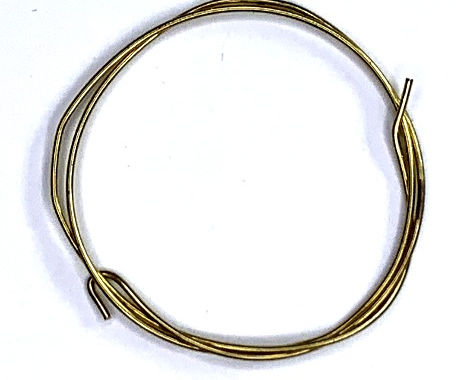
SAMrI NANO
FABRICATION
You're about to fabricate a electronic-based product, just as a technologist may in a manufacturing company. The quality of your product is directly dependent on the time and care you take with the product assembly!
It's exciting to start, but take your time, and enjoy the creation process and READ THE INSTRUCTIONS. If you have any questions of comments to improve them, please feel free to connect with me with your idea's
Once complete, you will not only have a competition ready sumo-bot, but also a very flexible platform for electronics and programming experimentation which have boundless applications! Enhancements are encouraged!
We hope you enjoy building these as much as we have creating them and HAVE FUN!!
-Dan & Craig
TOOLS
You will need these tools to assemble your kit:


Needle-nose pliers
Safety Glasses

Quality Soldering Iron

Side-cutters

Solder

Ruler or Vernier Caliper
SOLDERING
How do you solder?? Here's a great video to get you up to speed on making a workable solderjoint.
Here's a couple notes not mentioned in this video:
-
When pulling your iron away from the solderjoint, drag it up the shaft of the wire. This will stop the solder from "spiking" toward your iron.
-
To clean the flux off after you've finished soldering, scrub the board with a toothbrush and 90% isopropyl alcohol. This will remove the flux from the board.
-
Professionals prefer to "snip" the excess wire off BEFORE soldering, leaving just a couple mm above the board. Snipping AFTER soldering can cause micro-fractures in the solder joint which can cause degradation of the joint after a while.
-
Avoid breathing solder fumes, and wash your hands well afterwards to remove the solder and flux residue.
-
If you do burn your finger, place it quickly on your wet sponge to cool it down. ( Not your mouth! )
-
Hold the wires as you clip them to avoid them shooting across the room.
-
ALWAYS WEAR SAFETY GLASSES!!

PARTS LIST
Check your parts!
As you remove your parts and check inventory, you should place them in a suitable storage device such as egg-tray or muffin-tin. Most parts are small and can easily roll away! Feel free to check the checkboxes as you locate them.

Three 100 ohm ( Brown Black Brown Gold )
Three 4700 ohm ( Yellow Purple Red Gold )
One 330 ohm ( Orange Orange Brown Gold )

Two QRD1114 Optical Reflectance Sensors









3D Printed Components Subject to Appearance Changes










Assembly Video Tutorial
When it comes to assembling your new sumo kit we have created a couple resources for you the first is the video tutorial found directly below this text and below this video we have created written instructions for you.
Step 1:
GEARBOX FABRICATION
With the TAMIYA gearbox, you can decide to build several different gear ratio's. The highest ratio gives you the most torque ( pushing power ) and the quickest stopping, but is the slowest.
The lower gear ratio's give you more speed, but less torque.
Note: Different gear ratio's may reverse the direction of the FORWARD drive, so you may have to modify your program to compensate.
Here is a video explanation of building the 114.7:1 version of the gearbox.

38.2:1 Gear ratio (Recommended)

114.7:1 Gear ratio

Both motor options in slides below...

38.2 : 1 Shown
Step 3:
MONOLYTHIC CAPACITORS


Do these 4 Steps...

Step 4:
Headers

Install Headers for CPU & Jumpers
Place all four headers in position and solder only one pin on each.
Verify all headers are straight, correct if necessary, then fully solder in place.

Step 5:
EDGE DETECTORS
Photo-reflective sensors

Do these 4 Steps...
Step 6:
BRASS WIRE CONNECTORS

Do these 9 Steps...
Step 7:
POWER SWITCH
Install Slide Switch

Place Slideswitch in location PWR-SW
-
There is no polarity
-
Component should be flush with board
-
Solder, and clip excess leads
Caution! this component will melt if over heated

Step 8:
SEMICONDUCTORS
Voltage Regulator, LED and Motor Controller



Do these 3 Steps...
Step 9:
Electrolytic Capacitor
Install C9
Place
C9 1000uF Electrolytic Capacitor
Caution: Polarity matters! Negative lead ( with white stripe on case ) towards the right!
Place flush with board, solder and clip excess lead.


Step 10:
BATTERY & IR HARNESS
Do these 5 Steps...
Step 11:
PROCESSOR MODULE

Do these 4 Steps...
(Optional)
SOLDER FLUX CLEANING
Since your soldering is largely complete, this would be a good time to bring out the Isopropyl Alcohol and toothbrush and scrub the flux residue off of your circuit boards!
Depending on your choice of solder this flux may be conductive.
_edited.jpg)
Step 12:
MOUNTING GEARBOX TO PCB
Do these 4 Steps...
Step 13:
BASEPLATE AND BATTERY
Using two screws from your Gearbox kit, attach the baseplate onto the bottom of the gearbox using the tabs of the gearbox as shown.
Next, insert the O-rings onto each wheel and push them onto the gearbox shafts




Apply the foam tape ( if not already applied ) to the top front of the battery holder as shown.



Use the two mounting pins to install the battery holder as shown.
Press the 6AA battery back to the sticky foam as shown here
To change the batteries, remove the pins and pull out the holder and pack together.
Put your allen key, used for tightening up your gearbox, in this little hole on the left side of your chassis. This will come in handy if your gearbox grub-screw comes loose!

FINAL CHECK:
Have a close look to make sure your kit looks similar to these!















